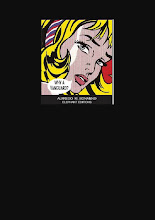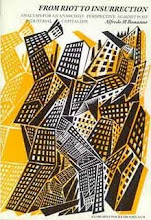Published in English in: Revolution, Violence, Anti-authoritarianism. A few notes
To study methods of revolutionary struggle without first having a clear idea of what we mean by revolution can be extremely dangerous and could lead to quite disconcerting consequences.
Unfortunately this mistake has often been made. The Leninists in particular have repeatedly come out with concepts that are applicable to war in general, often influenced by reading Clausewitz, or a Lenin who read Napoleon, Clausewitz, Moltke, von der Goltz, Frederick the Great, etc. Hence all the conclusions relative to a dialectic of war and peace, which in the best of cases is very far-fetched. What is even more serious, this leads to an eminently authoritarian concept of revolution, seen as the coming out of a particularly gifted personality or an elite of particularly gifted people with a strategic plan similar to that of traditional warfare, which they carry through to victory. Those who have ended up on this road are men such as Caesar, Napoleon, Trotsky, Mao-TseTung, all fabricators of victories which came to nothing in their need for results at any cost.
In this way the revolution becomes a theoretical problem, and the revolutionary struggle a question of strategy. In a recent book Cesare Milanese saw Lenin and Trotsky studying the origins of the ‘revolutionary ideas of Bolshevism’ together at the British museum in the years between 1900-1903 as though they were somehow sowing the seeds of future victories.
It is clear, at least for us, that with such prospects a methodology of revolutionary struggle becomes no more than a military manual whereas, if anything, it should be a manual for militants. There is a considerable difference between the two. The military man in the traditional sense of the term is merely an object who must obey orders and die, the militant in revolutionary terms is a subject who must think and, if necessary, also die. It is therefore impossible to suggest or impose on the latter precepts which would be acceptable only to the first.
Now the fundamental error is lack of faith in the constructive capacity of the masses, hence the revolutionary individual believes in having to work, albeit in the depths of the British museum, not in the latter’s interests but in place of them, independently of any consideration of their presence. They don’t realise that revolution is not just a warlike event, it is also, and principally, a human and social one. All this inevitably leads to new and more terrifying authoritarian structures.
It is quite true that an active minority can carry out preventive clarification. But to go from this to considering their action as something separate from the social context, from the effective situation of the masses—as in the case of a science of revolutionary war that is valid in absolute—seems quite absurd to me.
It is not at all true that methods of revolutionary struggle can grow from an abstract conception of the latter. To think in this way is misleading concerning the real significance of revolutionary methodology. That is why, before examining methods, it is necessary to clarify a few points: the concept of revolution, the alternative (only apparent) between violence and nonviolence, and the (concrete) alternative between authority and freedom.
The concept of revolution
Never has any term been more controversial. Even fascists have spoken of revolution. The climb to power by the Bolsheviks in Russia is considered revolution, and the French revolution is considered to be that of the Rights of Man. Different and contrasting situations, different periods, different problems but persistence in the use of the same word with all the consequences that this entails.
The revolution is a change of values, not a banal modification of norms. With the revolution new situations, new institutions are born and past conditions and privileges are destroyed as a climate of justice and equality comes to take the place of the preceding one of tyranny and social division. But this schema corresponds little to an effective analysis of the elements necessary to determine a modification in the situation of privilege following the revolutionary event.
Here a disturbing component appears on the scene making a linear application of the revolutionary principle, which everyone agrees is of a libertarian nature, impossible. A look at this component reveals two defective situations, one that is typical of the active minority, the other that is typical of the masses. The first is determined by the fact that the active minority, who should be the first to have clear ideas, do not have them at all and often get tangled up in immediate prospects, easy solutions and come to agreements with elements that are only revolutionary in appearance and in fact are fundamentally counter-revolutionary. The second is determined by the fact that the masses have submitted to the constrictions of authority for too long so are not able to accept the new anti-authoritarian structure like a bolt from the blue. If we add to this the forces of the residual reaction and the inability to foresee the construction of a truly revolutionary organisation with essentially functional and not structural or pyramidal concepts, we should have some idea of the problems involved.
That is why the task of the active minority must be to transform the atmosphere and prepare it for the struggle against authoritarian ideologies. In other words, to prepare for revolution. In order to do this it is necessary to fight a violent system with means that are violent. There is no alternative. Our fighting must not be a blind writhing of exasperation, but a rational blow with a cold precise look at our enemy. Without hesitation but without hatred, which would not only cause more damage than good, but undermine the whole revolutionary process on a moral level.
The alternative between violence and nonviolence
As we have said, these alternatives are illusory as the doctrine of nonviolence does not exist in reality. The latter is merely a degeneration of the principle of defensive violence or a simple play of words as there is merely recourse to violence with a banal sophism. When the Indian disciples of the great theoretician of nonviolence surrounded a reactionary who wanted to force them to accept his demands, let us say following a strike, and enclosed him in a circle leaving him bareheaded in the midday sun, they were using one of the techniques of nonviolence. So we are sure that there is no alternative whatsoever to the theory of revolutionary violence intended as defensive violence for anyone who wants to fight and destroy a system of infamy and shame.
We are convinced that only a violent revolution will be able to solve the social problem at the stage in which countries in various parts of the world today have been determined or at least influenced by the acute phase of bourgeois or State capitalism.
But there is no need to believe that revolutionary violence, simply because we define it ‘defensive’ must necessarily be used after the forces of reaction have unleashed their offensive, have attacked the revolutionary forces or, even worse, put a preventive counter-revolution in to effect. It would be pure suicide to think this.
Revolutionary violence is preventive organisation and preventive attack on the bourgeois forces. It is the struggle against State institutions, it is the specific search for confrontation, aimed at the surrender of the State superstructure. Revolutionary violence is initiative, the preparation of guerrilla organisations, the formation of the forces of resistance, and the thinking out of new programmes of attack. Nevertheless revolutionary violence is still defensive violence. In fact the institutions, the State, the bourgeois structure, the military repressive forces, the police and every other expedient put into effect by the shrewd pillage organised by the bosses, is in itself a provocation, an attack, a sentence, a systematic blow. Even when all these repressive forms take on the loose aspect of dialogue and tolerance, even when we feel a familiar hand on the shoulder, precisely then is the moment to strike harder, more deeply.
The generating strength of revolutionary violence must be considered at the base of every attempt to liberate the oppressed, it being unthinkable for the authentic mechanisms of economic and political factors to determine the maturity of the revolutionary situation on their own. It needs the will of men, their predetermined conscious actions, their violent actions directed against institutions.
The alternative between authority and freedom
But the breaking up of values caused by the revolution can go in two directions. The first is the authoritarian one, favoured by the fact that the revolutionary moment is more chaotic than anything, giving little time for reflection. It is a moment in which situations strengthened by men’s will intersect with situations created by the power of things and the economic and political structures. The presence of the old authoritarian ideological structure, most often the fruit of the bourgeois organisational and productive structures, cannot be eliminated easily. If to this situation is added the presence of people who are unprepared for anti-authoritarian solutions, people with little faith in the possibility of the self-determination of the masses, one can understand why the possibilities of an authoritarian development of the revolution are many,
There remains the other direction, the anti-authoritarian one. A more conscious, difficult direction. Not so much because the objective situations determined by prevalently economic factors are in contrast with this kind of solution as because the active minority may not have the necessary faith in the masses that this solution requires, making them feel entitled, for the superior aims of the revolution, to put themselves in their place. It is here that the great incomprehension that we took up at the beginning of these pages lies. The superior aims of the revolution no longer exist when it is betrayed by the authoritarians, when the initial anti-authoritarian vision becomes compromise with governmental structures under the vestiges, let us say, of a dictatorship of the proletariat.
Unfortunately today in the present state of anti-bourgeois libertarian development with its flourishing of doctrines and pseudo-revolutionary tendencies, expectations of an immediate anti-authoritarian revolution do not appear favourable. In any case the conscious participation of forces within the liberation movement, their constant and documented actions in favour of an education to freedom, and their increasing opening towards the elimination of sectarianism, are all elements which will open the way to a libertarian presence and action within future anti-authoritarian revolutionary solutions. The post-revolutionary struggle of tomorrow will be even harder than that of today, but that must not scare us. The road to the real revolution could also pass through the authoritarian or pseudo-revolutionary one.
skip to main |
skip to sidebar

Some writings of Alfredo Maria Bonanno in English, or almost

Alfredo Bonanno was arrested on October 1st 2009 in Greece, accused of concourse in robbery. With him, anarchist comrade Christos Stratigopoulos.
Here are a few translations and part translations of a small portion of Alfredo's writing. This is a work in progress, many of the translations are as yet incomplete. Open links to find more of Alfredo's work.
Alfredo Bonnano Released
Nov. 22 Alfredo Bonnano was sentenced to 4 years imprisonment (which practically means that with the time served so far and the fact that he is over 70years old HE IS RELEASED
Christos Stratigopoulos (who took responsibility for the action)
was sentenced to 8 years and 9 months with the Greek law will probably be released at the end 2011
BY ANY MEANS NECESSARY
LINKS
click on any of these labels to read text
- "Community" sickness
- 1981 - Editorial
- A Critique of Syndicalist Methods
- A few notes on Sacco and Vanzetti
- A few notes on the revolutionary movement in Italy
- A little man in Singapore
- A million jobs
- A question of class
- Affinity
- After Marx autonomy
- Albania Laboratory of Subversion (Introduction)
- Anarchism and the national liberation struggle
- Anarchists and action
- AND WE WILL ALWAYS BE READY TO STORM THE HEAVENS AGAIN (Against amnesty)
- ANTI-INSTITUTIONAL MOVEMENT
- Are we modern?
- Armed Joy
- ARMED STRUGGLE. SOME REFLECTIONS.
- Autonomous base nuclei
- beyond syndicalism
- Beyond workerism
- But what is the imaginary?
- Class War
- Comiso - Organizational document of the self-managed leagues
- Considerations on illegality
- Dissonances (Introduction)
- Elephant Editions 1986
- Excluded and included
- Farewell to claiming
- Feral Revolution (Introduction)
- FICTITIOUS MOVEMENT AND REAL MOVEMENT
- For an Antiauthoritarian Insurrectionist International - Proposal for a debate
- From riot to insurrection
- From the centre to the periphery
- Good technology
- Guerilla Extraordinary
- Habits and idols
- Hegel
- I know who killed chief superintendent Luigi Calabresi
- Illegality
- Illness and capital
- Informal organisation
- Insurrection
- Internationalism
- Introduction to Sabate
- Introduction to Anarchism and Violence
- Introduction to Bratach Dubh English edition of Malatesta's Fra Contadini
- Introduction to Insurrectionalist Anarchism
- Introduction to Strange Victories
- Introduction to The Conquest of Bread
- Involuntary aspects of voluntary work
- Let's destroy work
- LET'S DESTROY WORK. New introduction
- Let's keep our feet on the ground please
- Lightening Conductors and Stand-ins - more shots of non-news
- Lightning Conductors and Stand-ins
- Lightning Conductors and Stand-ins (cont.)
- Locked up
- Looking forward to self-management
- Loss of language
- More on internationalism
- National Liberation Struggle
- nineteen years on
- No more crises
- Non-news about drugs
- Non-news about racism
- Ode to the Uniform
- On Feminism
- One's life on the line
- Order and chaos
- Otto Ruhle (Introductory Note)
- OUR ROLE IN THE PRESENT CONFLICT
- Palestine mon amour
- Pantagruel anarchist review
- Pinelli
- Prison and Prisoners’ Struggles - Introduction
- Propulsive Utopia
- Quality and the factory
- Restructuring Capital and the new democracy
- Revolution - Violence - Antiauthoritarianism
- REVOLUTIONARY VIOLENCE
- Science and the social revolution
- Self-management
- Severino Di Giovanni in Argentina 1923-1931 by Osvaldo Bayer
- Social banditry
- SOME NOTES -
- Space and Capital
- Stirner
- Stop the City? From information to attack
- Strategy and Methods
- Streamlined production
- The "end" of the crisis
- The aesthetics of anarchism
- The anarchist tension
- The area of autonomy and the anarchist movement in Italy
- The armed wing of science
- The Cruise missile base at Comiso can be prevented
- The ethical bank
- The insurrectional project
- THE LANGUAGE OF TECNICS -
- The logic of insurrection
- The moral split
- THE NECESSARY DESTRUCTION -
- The priority of practice
- The refusal of arms
- The revolutionary project
- The revolutionary struggle
- The significance of an insignificant event
- The struggle for self-managed social space
- The tyranny of weakness
- The whole and the part
- The young in a post industrial society
- Theory and action
- Towards anarchist antimilitarism
- TOWARDS THE GENERALISATION OF ARMED STRUGGLE
- TRANSFORMATION IN THE WORLD OF WORK AND SCHOOL -
- TRUTH -
- Unemployment in Italy - How come everything doesn't explode?
- Untitled
- Violence and non-violence
- What are anarchists
- What can we do with anti-fascism?
- Why a vanguard?
- Why Insurrection
- World domination in a few words











